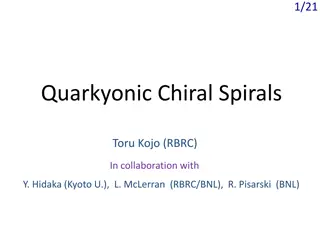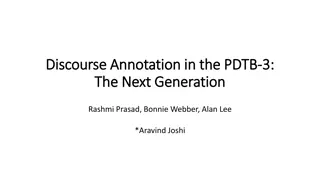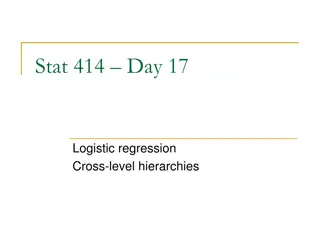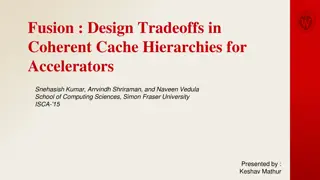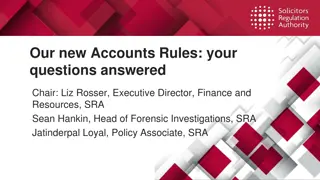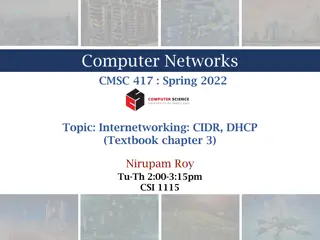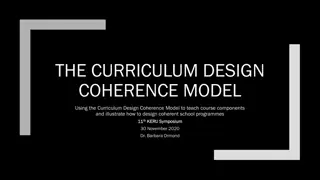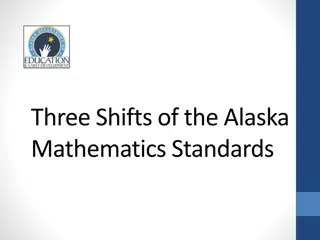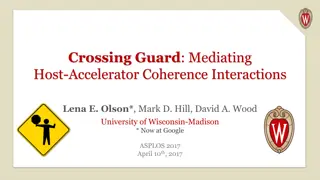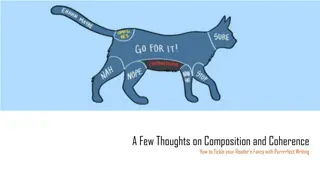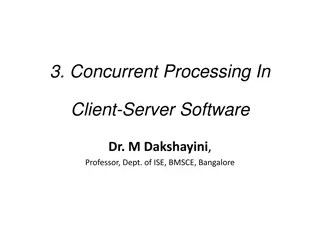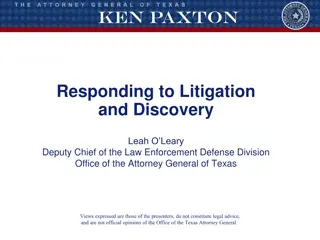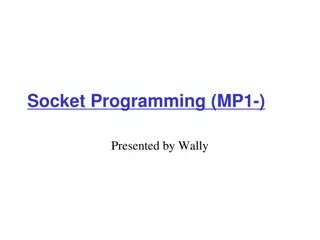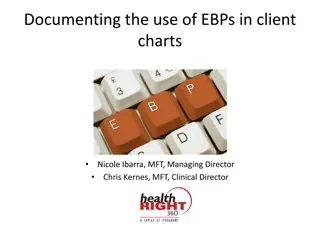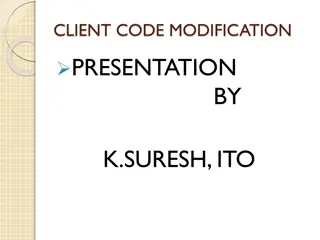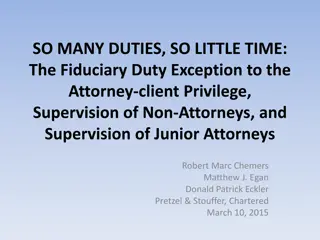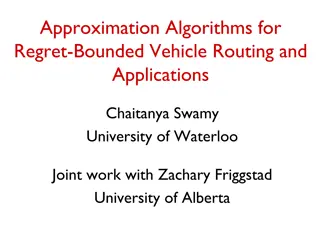Efficient Manager-Client Pairing for Coherence Hierarchies
Addressing the challenges in designing and integrating coherence protocols, this framework emphasizes using existing protocols as building blocks for heterogeneous hierarchies. The Manager-Client Pairing approach enables efficient communication, action types, and usage of tier width and hierarchy height for optimal performance.
Uploaded on Sep 26, 2024 | 0 Views
Download Presentation

Please find below an Image/Link to download the presentation.
The content on the website is provided AS IS for your information and personal use only. It may not be sold, licensed, or shared on other websites without obtaining consent from the author. Download presentation by click this link. If you encounter any issues during the download, it is possible that the publisher has removed the file from their server.
E N D
Presentation Transcript
Manager-Client Pairing: A Framework for Implementing Coherence Hierarchies Tinker Research Georgia Institute of Technology Jesse G. Beu Michael C. Rosier Thomas M. Conte
The Problem Coherence protocols can be difficult to design properly Integration of coherence protocols is even more difficult Leads to monolithic, homogenous coherence in a heterogeneous future
The Solution Use existing protocols as building blocks Enable coherence integration and composition Leads to heterogeneous hierarchies in a heterogeneous future Design using best local protocol for the common case
Width Variation Observation L1? Miss? Latency? Histogram? 0.12? 0.1? Percent? of? Accesses? 0.08? 256? 0.06? 64x4? 16x16? Off-Chip 0.04? L2 Hit 4x64? 0.02? 0? 0? 30?60?90?120? 150? 180? 210? 240? 270? 300? 330? 360? 390? 420? 450? 480? 510? 540? 570? 600? L1? Miss? Latency? Bin? Ocean_C while varying tier width at fixed 2-level
Manager-Client Pairing Coherence Domain Manager Tier 1 Client Client Client Client Coherence Realm Manager Tier 2 Client Client Client Client Coherence Realm Manager Tier 3 $ $ $ $
Outline Motivation Introduce Manager-Client Pairing Communication Similarity and Recursion Types of Action Query, Get and Grant MCP Algorithm and Example Impact of Tier Width and Hierarchy Height Future Work and Conclusion
Self-Similarity for Recursion Processor <-> Cache Request Data Transparently asks if we have permission Gets permission if not Cache supplies Data Cache <-> Memory Request Data Memory supplies Data Add asking feature Internals of each layer can be black-boxed Upper Upper Memory Acquire Acquire Query Query Supply Supply Manager Manager Protocol Protocol Permission Allocation Acquire Supply Clients Clients Acquire Acquire Query Query Supply Supply Lower Lower Processor
Types of Actions Query Permission Query to check permission level Get Request permissions and Data Read and Write Permission, supplying Data Permission upgrade (e.g. Shared -> Modified) Grant Response to earlier Get request
Manager and Client Pair Upper Manager Coherence Realm Boundary Permission Queries C o h e r e n c e D o m a i n M a n a g e r T i e r 1 Permission/ Data Acquire C l i e n t C l i e n t C l i e n t C l i e n t C o h e r e n c e R e a l m M a n a g e r Client Manager T i e r 2 Permission/ Data Supply C l i e n t C l i e n t C l i e n t C l i e n t C o h e r e n c e R e a l m M a n a g e r Downgrade Requests T i e r 3 $ $ $ $ Lower Clients Lower Clients Lower Clients Lower Clients
MCP Algorithm Legend Processor 'Get' Issued to Manager-Agent Request Up a Tier Reply Down a Tier Load New Incoming Request Waiting for permission Client-Agent Permission False Get Permission Get True Manager issue Grant Permission Response to Client-Agent Has True Grant Manager? False Satisfy Processor Request
Example Realm Hit Memory - Manager A E 3) ReadP Client A0 E Client A1 I Manager B M Manager C I 1) ReadP Client B0 I Client B1 M Client C0 I Processor - Processor - Processor -
Example Realm Miss Memory - Manager A E 3) WriteP E Client A0 E I Client A1 I M Manager B O I ManagerC I 1) WriteP S I O I M Client B0 Client B1 Client C0 I Processor - Processor - Processor -
Latency Impact of Hierarchies Strong analogy with cache design Tier width (# of clients) <-> cache sizing Smaller Tiers result in lower capacity with faster access Larger Tiers have higher capacity with slower access Hierarchy height (# of tiers) <-> cache levels Motivation of this work! Single flat protocol won t scale Analogous to having a monolithic cache Deeper hierarchies are not always good Benefit of smaller, fast tiers while retaining capacity Make too small and the lowest level will frequently miss Additional penalty of hierarchy indirection Consider L3/L4 Caches vs. larger L2/L3 caches
Width Variation Observation L1? Miss? Latency? Histogram? 0.12? 0.1? Percent? of? Accesses? 0.08? 256? 0.06? 64x4? 16x16? 0.04? 4x64? 0.02? 0? 0? 30?60?90?120? 150? 180? 210? 240? 270? 300? 330? 360? 390? 420? 450? 480? 510? 540? 570? 600? L1? Miss? Latency? Bin? Ocean_C while varying tier width at fixed 2-level
Future Work MCP s role in Validation Willing to discuss off-line Protocol interactions/selection Protocol and NOC topology co-design Hierarchical topologies Cross-vendor coherence integration
Conclusion MCP does address concerns regarding future coherence Uses existing protocols as building blocks Enables coherence integration and composition Demonstration of rapid development of a variety of hierarchy configurations MCP provides a generic coherence hierarchy composition framework to support continued scaling of diverse, massively coherent systems
Questions? Thank you!




